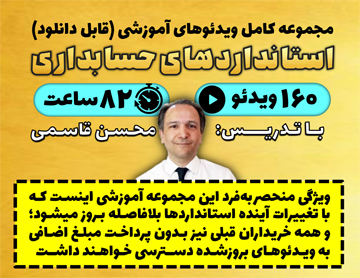واحد پول عملیاتی عبارت است از واحد پول محیط اقتصادی اصلی که واحد تجاری در آن فعالیت میکند. (استاندارد حسابداری 16 آثار تغییر در نرخ ارز (تجدیدنظرشده 1400))
محیط اقتصادی اصلی محل فعالیت واحد تجاری، بهطور معمول محیطی است که بخش عمده نقد واحد تجاری در آن ایجاد و مصرف میشود. برای تعیین واحد پول عملیاتی، واحد تجاری عوامل زیر را مد نظر قرار میدهد:
- الف. واحد پولی که قیمت فروش کالاها و خدمات عمدتاً با آن تعیین و تسویه میشود و رقابت و مقررات موجود در محل فعالیت، قیمت فروش کالا و خدمات را تعیین میکند.
- ب. واحد پولی که بخش عمده مواد، دستمزد، و سایر مخارج تأمین کالاها و خدمات با آن تعیین و تسویه میشود.
همچنین عوامل زیر ممکن است شواهدی برای تعیین واحد پول عملیاتی واحد تجاری فراهم کند:
- الف. واحد پولی که وجوه حاصل از فعالیتهای تأمین مالی (یعنی انتشار ابزارهای بدهی و ابزارهای مالکانه) بر حسب آن تحصیل میشود.
- ب. واحد پولی که دریافتهای حاصل از فعالیتهای عملیاتی، بهطور معمول بر اساس آن نگهداری میشود.
برای تعیین واحد پول عملیاتی یک عملیات خارجی و اینکه آیا این واحد پولی با واحد پول عملیاتی واحد گزارشگر یکسان است یا خیر، عوامل زیر نیز مد نظر قرار میگیرد (در این استاندارد، واحد گزارشگر، واحد تجاری است که دارای عملیات خارجی به صورت واحد تجاری فرعی، شعبه، واحد تجاری وابسته یا مشارکت باشد):
- الف. اینکه فعالیتهای عملیات خارجی به عنوان توسعه فعالیت واحد تجاری گزارشگر انجام میشود، یا به میزان زیادی مستقل است. نمونه توسعه فعالیت واحد گزارشگر زمانی است که عملیات خارجی صرفاً کالاهای وارداتی از واحد گزارشگر را میفروشد و عواید آن را به واحد گزارشگر برمیگرداند. نمونه مستقل بودن فعالیتهای عملیات خارجی زمانی است که عملیات خارجی دریافت وجه نقد و دیگر اقلام پولی، انجام هزینه، ایجاد درآمد و اخذ تسهیلات مالی را عمدتاً با واحد پول محلی انجام میدهد.
- ب. اینکه معاملات با واحد گزارشگر، بخش جزئی یا عمدهای از فعالیتهای عملیات خارجی را تشکیل میدهد.
- ج. اینکه جریانهای نقدی حاصل از فعالیتهای عملیات خارجی، بهطور مستقیم بر جریانهای نقدی واحد گزارشگر تأثیر میگذارد و برای انتقال به آن، به سهولت در دسترس است یا خیر.
- د. اینکه جریانهای نقدی حاصل از فعالیتهای عملیات خارجی، برای ایفای تعهدات استقراضی فعلی و تعهدات استقراضی مورد انتظار آن در روال عادی، بدون نیاز به وجوهی که از طریق واحد گزارشگر فراهم میشود، کافی است یا خیر.
زمانی که تعدادی از نشانههای فوق همزمان وجود دارد و واحد پول عملیاتی به وضوح قابل تعیین نیست، مدیریت برای تعیین واحد پول عملیاتی که اثرات اقتصادی شرایط، رویدادها و معاملات اصلی را به طور صادقانه ارائه نماید، از قضاوت خود استفاده میکند. به عنوان بخشی از این رویکرد، مدیریت قبل از توجه به نشانههای مندرج در بندهای 9 و 10، که به عنوان شواهد پشتیبان تکمیلی برای تعیین واحد پول عملیاتی واحد تجاری تشریح شده است، به نشانههای اصلی مندرج در بند 8 اولویت میدهد.
واحد پول عملیاتی واحد تجاری منعکسکننده شرایط، رویدادها و معاملات اصلی مربوط به واحد تجاری میباشد. بنابراین، واحد پول عملیاتی تعیینشده تنها زمانی تغییر میکند که شرایط، رویدادها و معاملات اصلی مربوط به واحد تجاری تغییر کند.
اگر واحد پول عملیاتی واحد تجاری، واحد پول یک اقتصاد با تورم حاد باشد، صورتهای مالی آن بر اساس الزامات ”گزارشگری مالی در اقتصادهای با تورم حاد“ تجدید ارائه میشود. واحد تجاری نمیتواند با انتخاب یک واحد پولی مغایر با الزامات این استاندارد به عنوان واحد پول عملیاتی خود (مانند واحد پول عملیاتی واحد تجاری اصلی)، از تجدید ارائه صورتهای مالی طبق اصول مذکور اجتناب نماید. (همان منبع)
Functional currency is the currency of the primary economic environment in which the entity operates - IAS 21 The Effects of Changes in Foreign Exchange Rates
The primary economic environment in which an entity operates is normally the one in which it primarily generates and expends cash. An entity considers the following factors in determining its functional currency:
|
10 | The following factors may also provide evidence of an entity’s functional currency:
|
11 | The following additional factors are considered in determining the functional currency of a foreign operation, and whether its functional currency is the same as that of the reporting entity (the reporting entity, in this context, being the entity that has the foreign operation as its subsidiary, branch, associate or joint arrangement):
|
12 | When the above indicators are mixed and the functional currency is not obvious, management uses its judgement to determine the functional currency that most faithfully represents the economic effects of the underlying transactions, events and conditions. As part of this approach, management gives priority to the primary indicators in paragraph 9 before considering the indicators in paragraphs 10 and 11, which are designed to provide additional supporting evidence to determine an entity’s functional currency. |
13 | An entity’s functional currency reflects the underlying transactions, events and conditions that are relevant to it. Accordingly, once determined, the functional currency is not changed unless there is a change in those underlying transactions, events and conditions. |
14 | If the functional currency is the currency of a hyperinflationary economy, the entity’s financial statements are restated in accordance with IAS 29 Financial Reporting in Hyperinflationary Economies. An entity cannot avoid restatement in accordance with IAS 29 by, for example, adopting as its functional currency a currency other than the functional currency determined in accordance with this Standard (such as the functional currency of its parent) |





دیدگاه خود را بنویسید